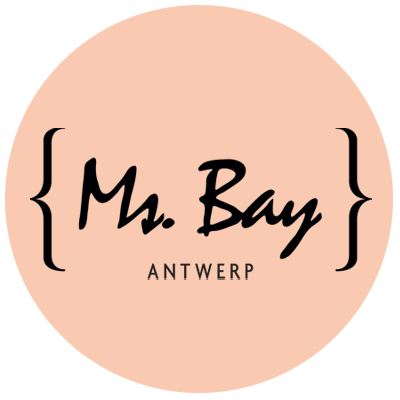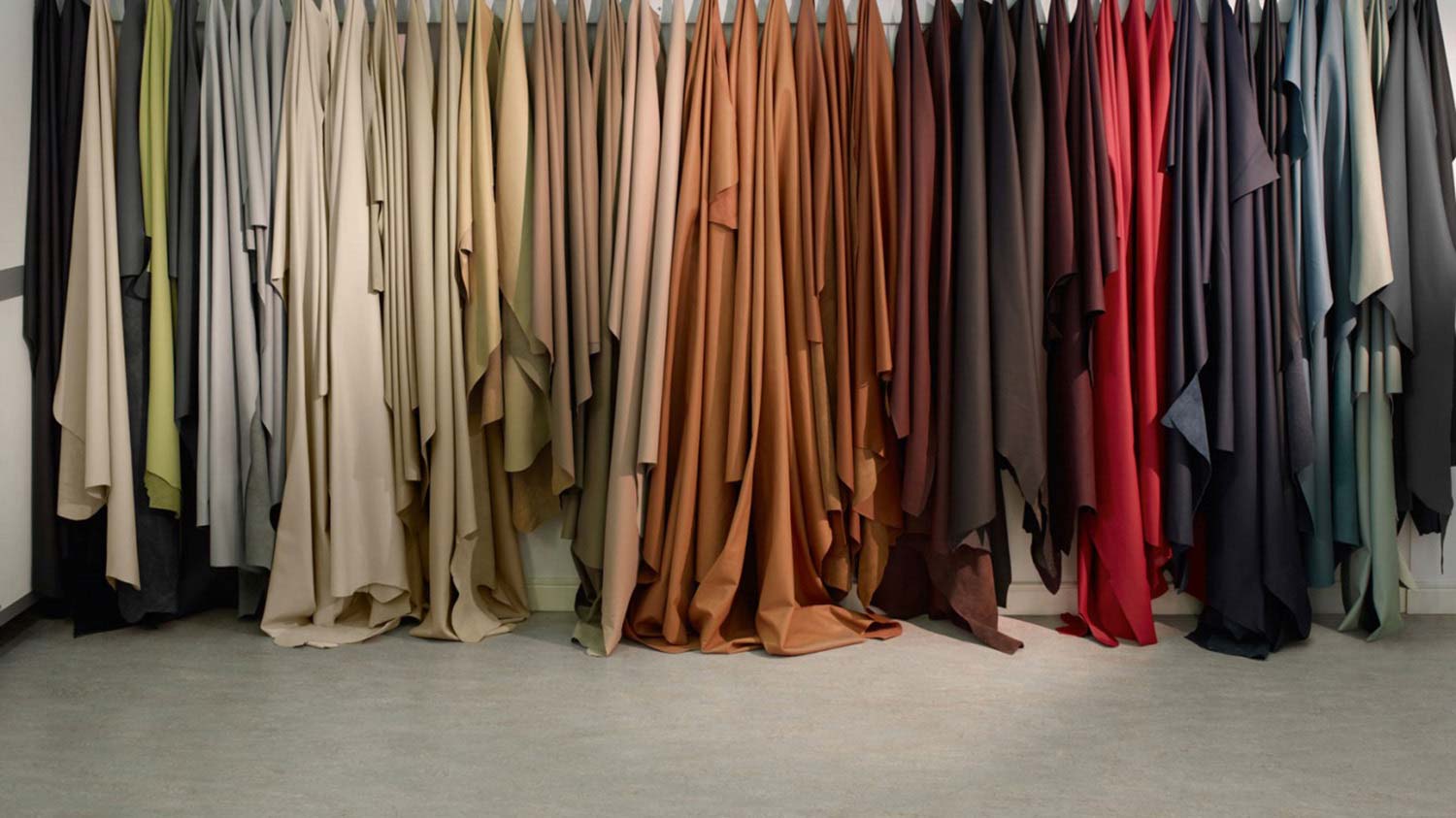
As with many products used in our daily life, nowadays the origin is often nothing more than a “Made in”- label. As manufacturing facilities have moved abroad, many of the processes and skills involved in making something have become abstract or unknown.
Leather is not an exception. Even though a very popular material and present in almost all product categories, (think shoes, bags, clothes, but also furniture and upholstery), most of us don’t really know how it is made, where it comes from and how some leathers differ from others.
You too might think of leather as either real or fake: genuine or faux leather.
But these two come in a lot of different compositions and finishes. Each type will have an impact on price, look and lifespan. But leather also has a huge impact on the environment.
Any product has three stadia in which it impacts the environment. These three are to be considered as a designer but also as a consumer of leather-goods:
- the impact of the manufacturing process,
- the impact during its life
- the impact as a waste product.
Which type of material or leather is most sustainable is really depending on how you look at it. That is why you will get different answers when you ask different people. There is no such thing as a holy grail of source material. Everything that is made and will one day have to be disposed of has a (negative) impact. Unless you run around naked and living like our ancestors, you’ll leave a footprint.
Before you can decide which material or leather is suiting your standards, you need clear information. Sometimes names given to a product can be deceiving and given the wide varieties available nowadays, it is often hard to evaluate the quality and origin.
‘Vegan’ or ‘cruelty-free’, for example, are today almost considered as symbols of ethics when it comes to a leather product. But don’t be deceived, this catch-all labels can mean many different things, and most of them aren’t as environment-friendly as you would think at all.
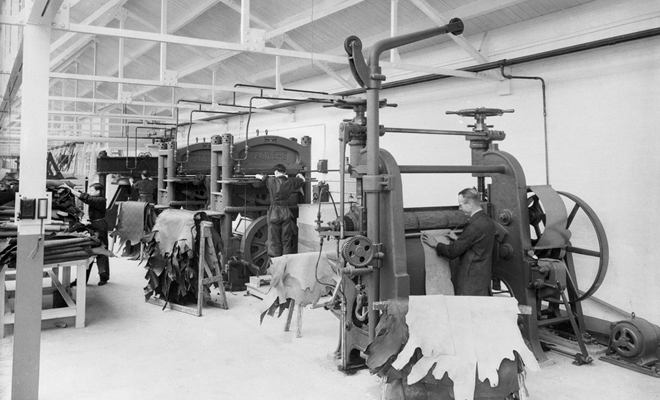
But let’s first have a look at the differences and types of genuine, man-made and faux leather:
1. Genuine leather:
As you probably know, this leather comes from the skins of animals. Hides from mammals (usually cow or goat) are split into different layers prior to production. The top layer is the most valuable and most durable. Here, the natural fibres are intertwined most tightly, making a strong surface. The further down into the layers of skin, the looser the fibres and the lesser the quality, durability and cost.
All genuine leathers are tanned. This process basically turns the raw skin or hide into leather. If a skin wouldn’t be tanned, it would harden and putrefy as it is an organic material.
How the tanning is done has an impact on the price, look and longevity of the final product. There are two types of tanning processes;
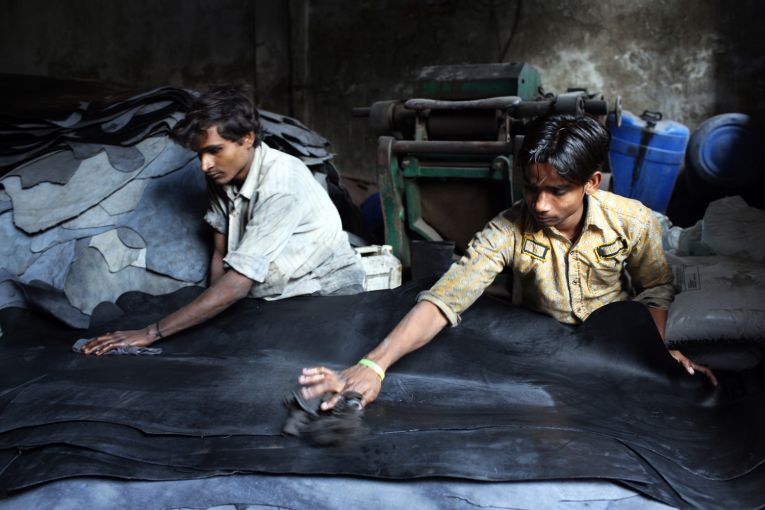
Vegetal tanning: This is how leather has been made for the past thousands of years. The skins are soaked in vegetable tannins, coming from trees and plants. It takes up to two months for the process to complete.
+ Pros: generally biodegradable, grows patina over time, environmentally friendly
– Cons: uses more water in the tanning process, is not water resistant, not available in a wide variety of colours, more expensive.
Chrome tanning: Since the mid-1800’s, vegetable tannins have been replaced by mineral tanning agents. This makes the tanning process go much faster. Today, not less than 99% of all leather is tanned with chrome, the most popular mineral tanning agent.
+ Pros: vivid colours possible and they remain unchanged, soft and supple, fairly resistant to water, stains and heat, relatively cheap.
– Cons: can have (very) negative environmental impact, will not develop a patina, can deteriorate over time.
2. Man Made leather
This type of leather is usually catalogued under either real or faux. But for me, it has something of both, so I decided to give it its own category.
Bi-Cast leather: This is made of the lowest layer of a hide; the one that remains after genuine leathers are split. This layer is made up of fibres that are so loose that they aren’t any good to use by themselves. But by adding a polyutherane coating you create cheap bi-cast leather. The internal integrity remains poor and the coating will easily crack and peel. Sometimes the coating however, is embossed in a way that it makes it harder to distinguish it from genuine leather.
Bonded leather: This takes the upcycling from leather remnants even a step further. Not a single hide is used to make bonded leather. Dust and scrapings are pressed and glued together and coated with polyutherane to mimic the look of leather. Some say this is not leather at all, some call it eco-leather since it uses what would otherwise simply be discarded. Either way, bonded leather is far from as strong as genuine leather and as bi-cast leather, the top polyurethane layer is not durable.
3. Faux leather:
Faux leather is a 100% man-made synthetical product and entirely without animal origin. While it used to be regarded as an inferior product and mostly found in sex stores, in recent years this has undergone a serious image transformation. Instead of ‘fake’, it is now often called ‘vegan’. This alone illustrates how tremendous the change in perception has been.
This type of “leather” is sometimes preferred over genuine leather by vegans and environmentalists. And even though I generally consider myself as impact-conscious and usually preferring so-called cruelty-free products, the short lifespan and toxic chemicals these are made off, worry me more than their animal origin.
PVC faux leather: This type of material is made by applying a PVC layer onto a base material such as polyester or nylon. PVC is short for Poly-Vinyl-Chloride. It’s made of chlorine and petroleum and mixed with stabilizers (to protect), plasticizers (to soften) and lubricants (to make flexible).
Some of these chemical ingredients have been linked to cancer. Substances as phthalates that are used to make rigid plastic supple can leach just by laying in the sun. In production, PVC produces harmful dioxins that enter waterways through waste-water and pollute the environment.
It is easy to understand why Greenpeace has called PVC the “single most damaging type of plastic.” As it is a plastic it does not degrade. It just breaks down into smaller and smaller pieces and will eventually end up in the environment as microscopic particles or ‘microplastics’.
PU faux leather: PU is short for Poly-Utherane. The basic structure of the material is very similar to PVC-leather; a PU coating is added onto a base material and an artificial grain pattern is applied.
PU is less toxic than PVC but the substance is still made from fossil fuels, which means that plenty of carbon dioxides are emitted during production. Moreover, making PU into a liquid to apply onto the base layer, requires solvents, which are highly toxic for the workers handling the PU leather.
So where does all that information leave us?
It’s important to realize that brands and especially marketers are eager to answer to the consumers’ search for more sustainable options. Since labels like ‘eco-friendly’, ‘vegan’ etc aren’t official or protected terms or quality labels, it is free to everyone to use as they please. Sometimes their statements are legit, sometimes nothing more than pure ‘greenwashing‘.
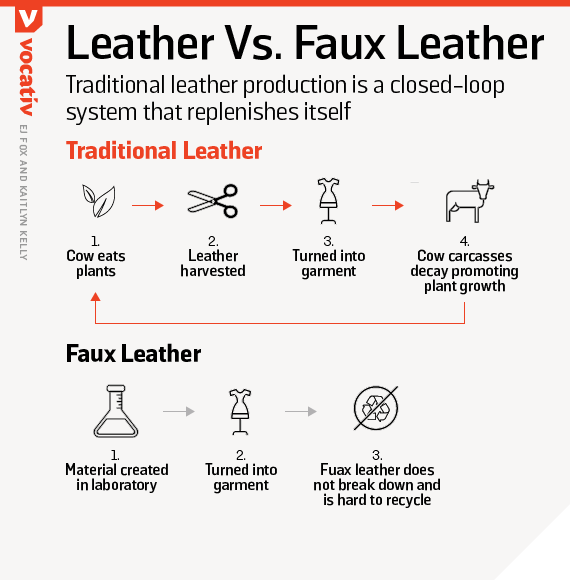
You can decide only to by second-hand vintage leather items.
But if you want to get something new, think of the fact that a faux leather item will never make it onto the second-hand market. With proper care, a good quality leather product will last for years, if not a lifetime and even longer. It can always be mend or restored if it gets damaged. The longer a product lasts the better it is for the planet.
As the demand for better and more sustainable products rise, new and ethical alternatives emerge.
A new plant-based PU is in the making, leather-like products from mushrooms and pineapple have been created and fish-leather is showing to be a luxurious alternative.
My advice for everyone who wants to improve or limit the impact of their consumption, is as Vivienne Westwood said so well: choose well and buy less.
Quality over quantity and just think before you buy about;
- Where it came from
- How you’ll use it
- How it will end its life.
You won’t find a perfect score on all three levels, but considering these will take you a long way.
